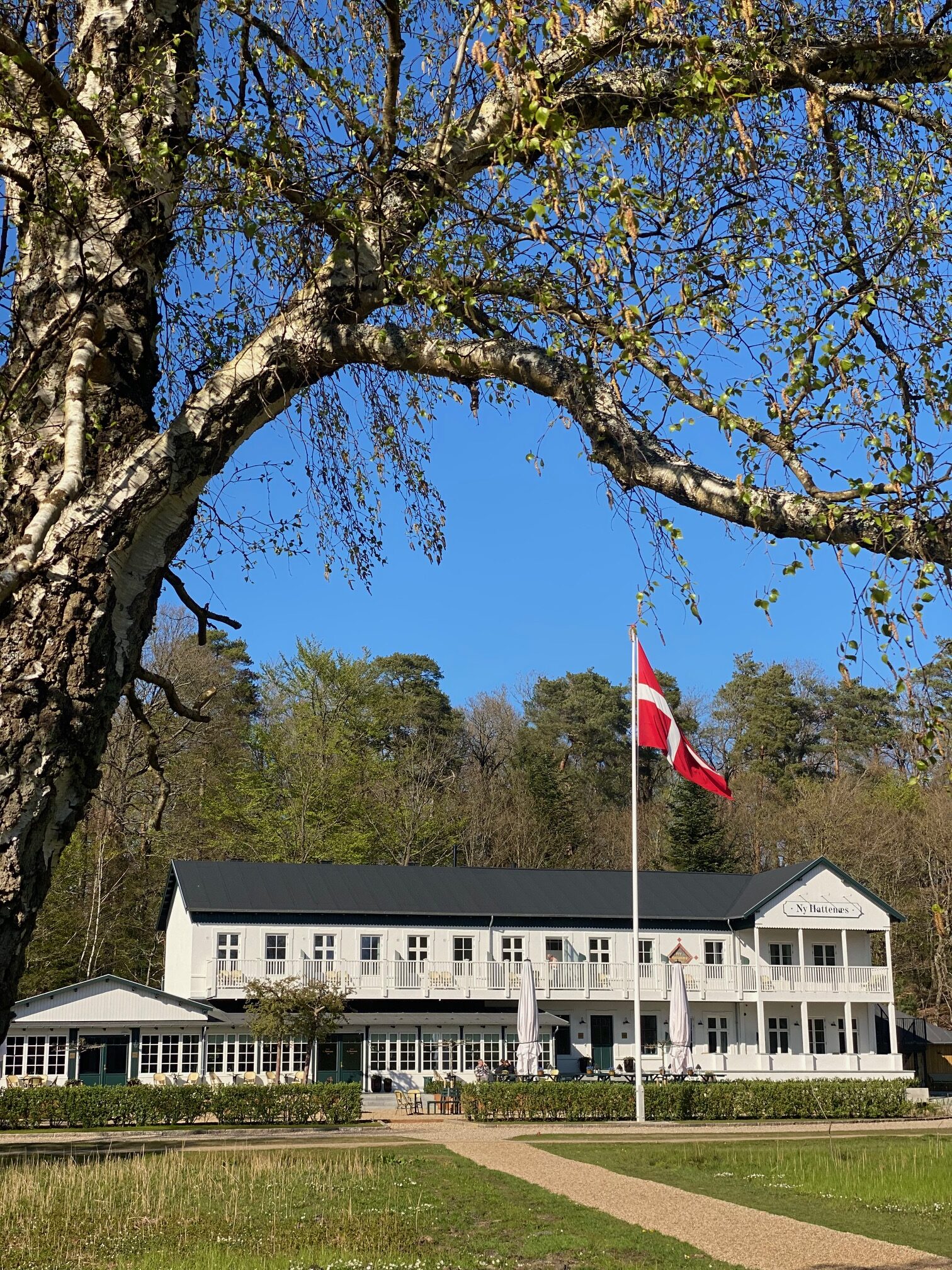The history of Ny Hattenæs Hotel is very special. If the walls could talk, they would probably tell incredible stories about the people who have visited the place in the past 125 years, the many unforgettable parties that continued into the early hours of the morning, and stories of the music and the food, the forest and the lake.
The following stories are based on the article “Etablissementet Ny Hattenæs”, which is part of the book “Det Handler om Silkeborg”. Reproduced here with permission from author Lis Thavlov, Silkeborg Archive
Hotel Ny Hattenæs
HOTEL NYHATTENÆS HAS A UNIQUE HISTORY. FILLED WITH UNFORGETTABLE CELEBRATIONS, MUSIC, FOOD, AND SCENIC SURROUNDINGS OVER THE PAST 125 YEARS.
![]()
The following stories are based on the article ‘The Establishment Ny Hattenæs’, included in the book ‘It’s About Silkeborg’. Reproduced here with permission from the author Lis Thavlov, Silkeborg Archive.
1896 – 1938
THE FIRST GUESTS ARRIVE
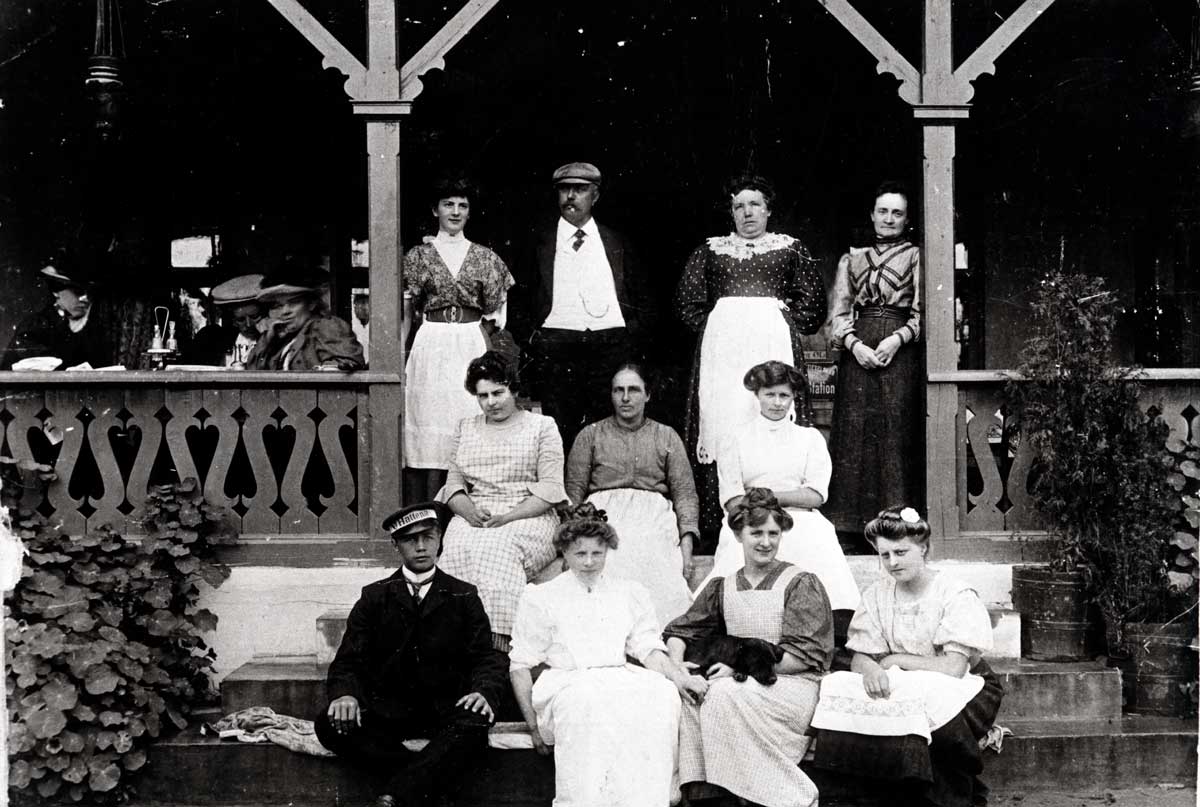
Photos: Silkeborg Archive
The first guests arrive at Ny Hattenæs in May 1896. Unfortunately, we do not know very much about the first years, apart from the fact that the place opened as a summer boarding house with new rooms and full catering. According to the local archives, it was only four years later, in 1900, that the establishment was expanded into a hotel and restaurant. It happened when the enterprising Matinius Didrik Fuglsang took over the place and initiated an extensive renovation, which in many ways forms the framework for the Ny Hattenæs Hotel we know today.
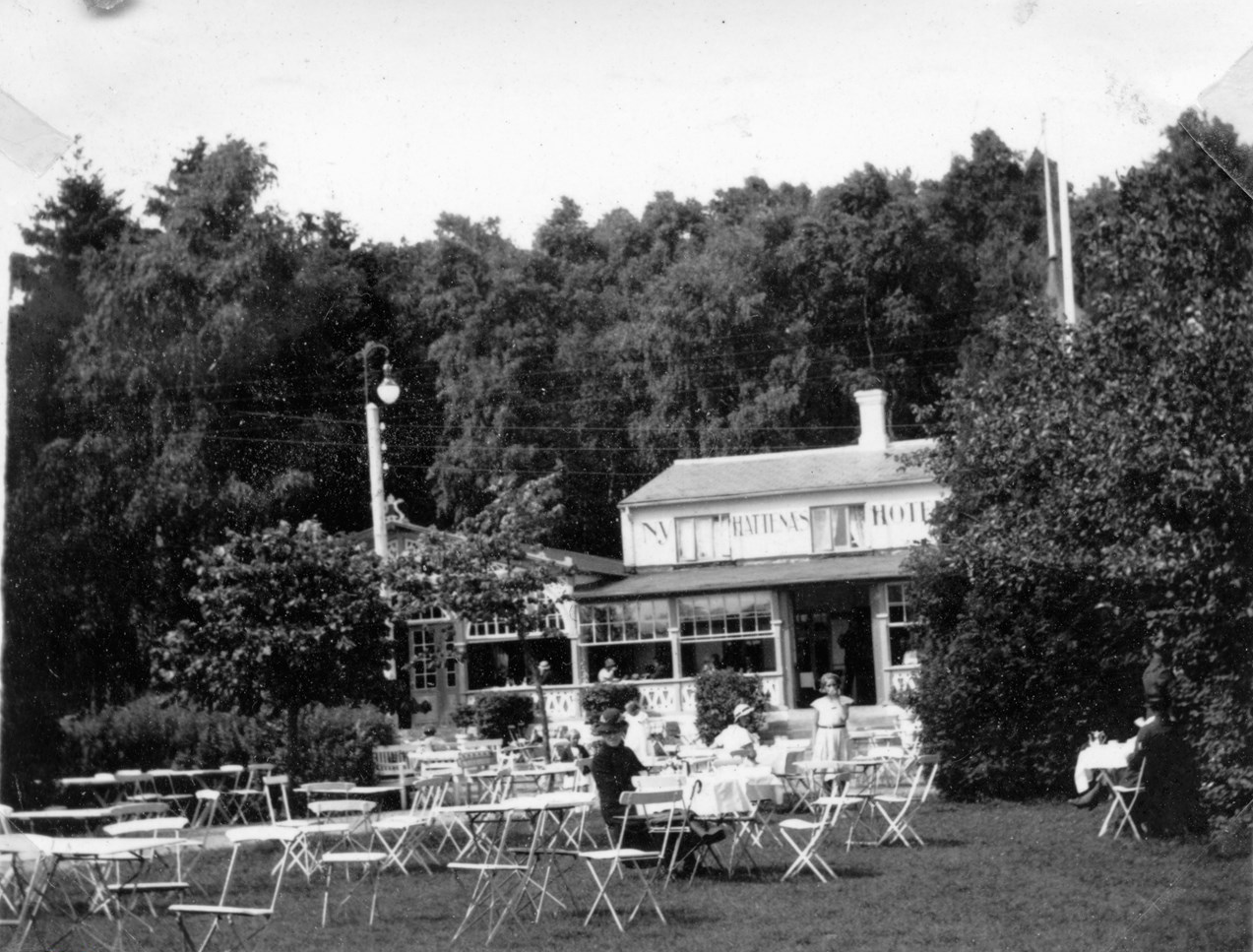
Photos: Silkeborg Archive
The nature surrounding Ny Hattenæs has always played a key role, and many guests have arrived to Ny Hattenæs by boat. Hjejlen, one of the world’s oldest operational paddle steamers, has also docked at the jetty for a period of time.
In the years after Matinius Didrik Fuglsang, Hotel Ny Hattenæs changed owners several times. However, the owners always had one vision in common: they wanted Ny Hattenæs to be a unique gathering place where memories are made. In 1914, an experienced restaurateur and hotel owner, M.P. Madsen, buys Ny Hattenæs. He remained in charge of the hotel for over 20 years until his death in 1938.

Photos: Silkeborg Archive
1896 – 1938
THE FIRST GUESTS ARRIVE
The first guests arrived at Ny Hattenæs in May 1896. Unfortunately, we do not know very much about the first years, apart from the fact that the place opened as a summer boarding house with new rooms and full catering. According to the local archives, it was only four years later, in 1900, that the establishment was expanded into a hotel and restaurant. It happened when the enterprising Matinius Didrik Fuglsang took over the place and initiated an extensive renovation, which in many ways formed the framework for the Ny Hattenæs Hotel we know today.

Photos: Silkeborg Archive
The nature surrounding Ny Hattenæs has always played a key role, and many guests have arrived to Ny Hattenæs by boat. Hjejlen, one of the world’s oldest operational paddle steamers, has also docked at the jetty for a period of time.
In the years after Matinius Didrik Fuglsang, Hotel Ny Hattenæs changed owners several times. However, the owners always had one vision in common: they wanted Ny Hattenæs to be a unique gathering place where memories are made. In 1914, an experienced restaurateur and hotel owner, M.P. Madsen, buys Ny Hattenæs. He remained in charge of the hotel for over 20 years until his death in 1938.
1944
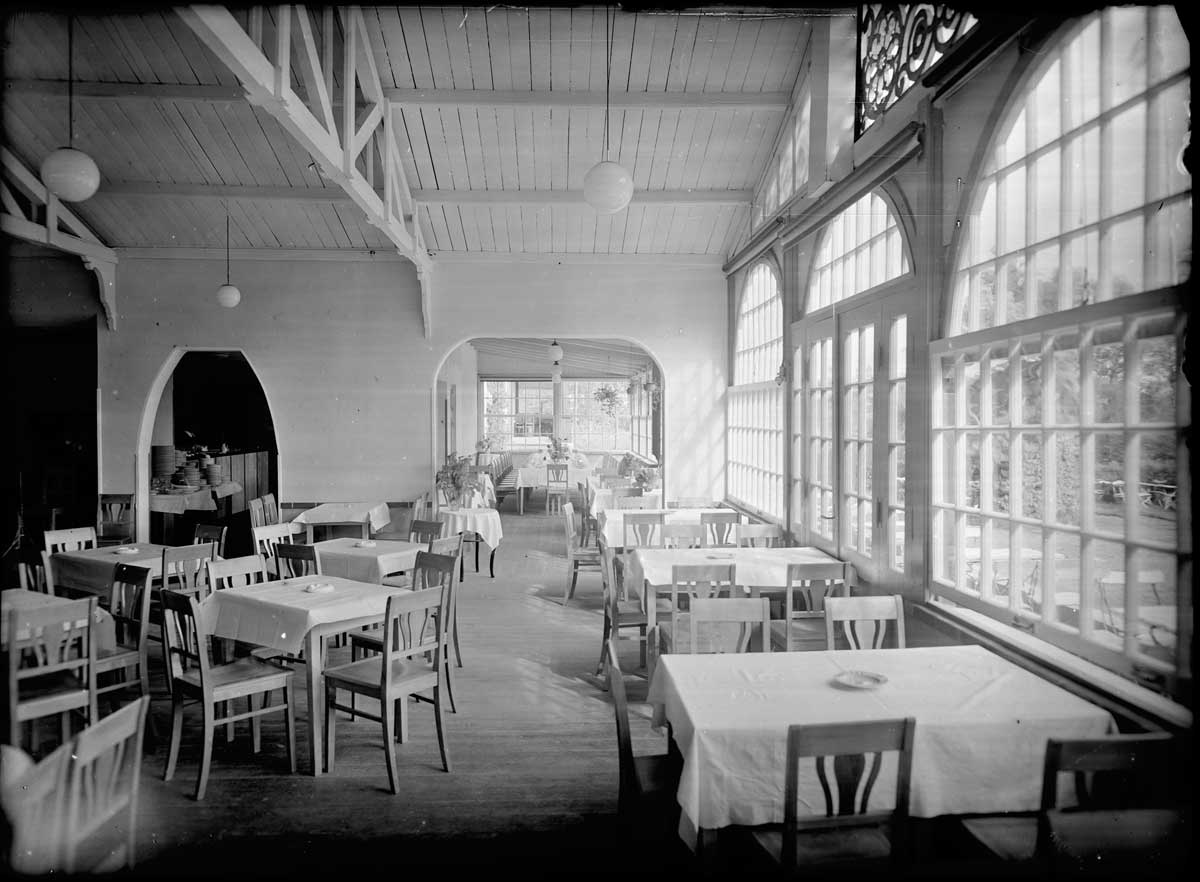
Photos: Silkeborg Archive
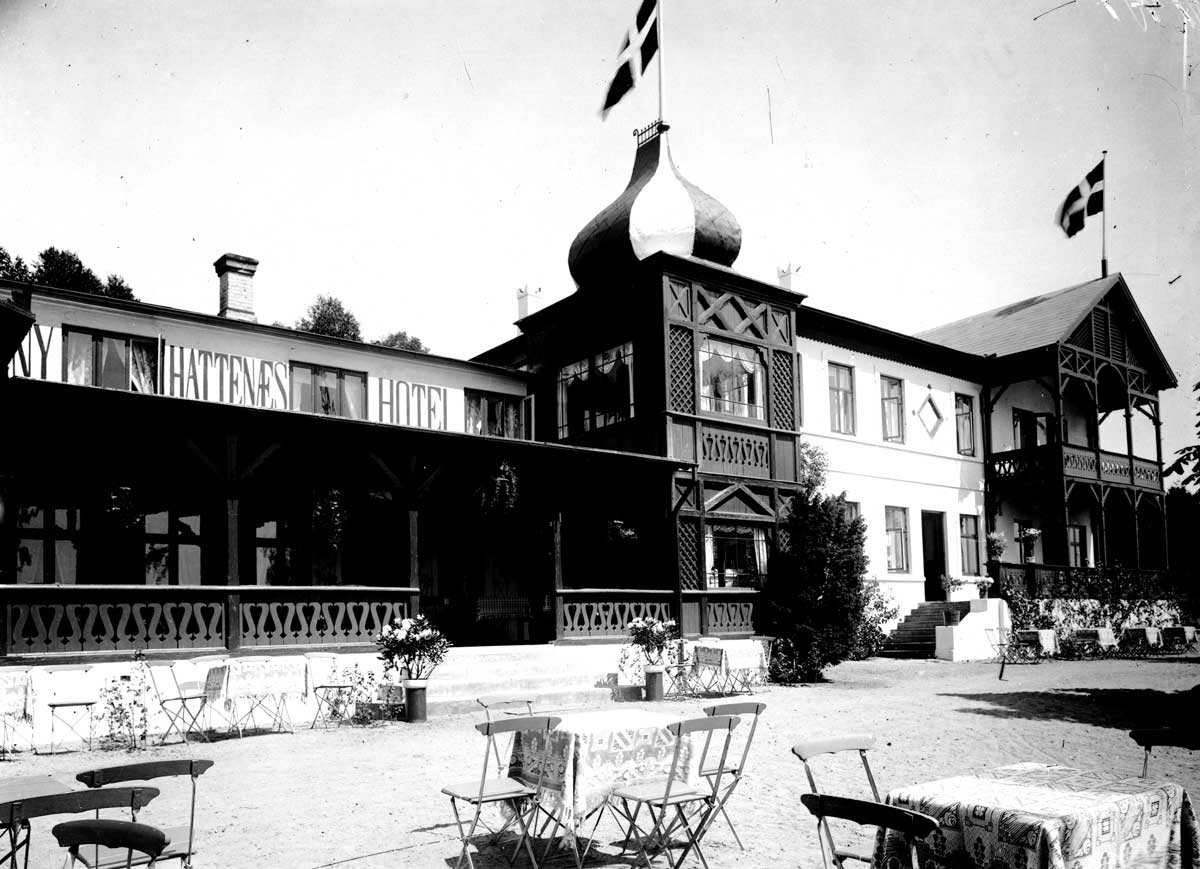
Photos: Silkeborg Archive
THE INFORMER LIQUIDATION
On a summer evening in August, while the orchestra is playing in the banquet room, a gunshot is suddenly heard. Gunnar Siim, a brick factory foreman, falls forward, shot in the back. The shot was fired by police officer and resistance fighter Einar Sørensen, also known as Leif. Why this liquidation took place is still unclear to this day.
THE LEGENDARY BLICHERSAL
Most Silkeborg residents who have visited Ny Hattenæs over the years will remember the large frieze that adorns the end wall of the hotel’s banquet room. The frieze was painted by Emil Poulsen, then head of Aarhus Theatre’s painting school, and it depicts the first Himmelbjerg Meeting in 1839. In the painting, Blicher is seen on a podium in front of a crowd with magnificent nature as the backdrop. The large mural was preserved when the hotel was renovated in 2021/2022.
1944
STIKKERLIKVIDERINGEN OG DEN LEGENDRISKE BLICHERSAL
THE INFORMER LIQUIDATION
On a summer evening in August, while the orchestra is playing in the banquet room, a gunshot is suddenly heard. Gunnar Siim, a brick factory foreman, falls forward, shot in the back. The shot was fired by police officer and resistance fighter Einar Sørensen, also known as Leif. Why this liquidation took place is still unclear to this day.

Photos: Silkeborg Archive
THE LEGENDARY BLICHERSAL
Most Silkeborg residents who have visited Ny Hattenæs over the years will remember the large frieze that adorns the end wall of the hotel’s banquet room. The frieze was painted by Emil Poulsen, then head of Aarhus Theatre’s painting school, and it depicts the first Himmelbjerg Meeting in 1839. In the painting, Blicher is seen on a podium in front of a crowd with magnificent nature as the backdrop. The large mural was preserved when the hotel was renovated in 2021/2022.

Photos: Silkeborg Archive
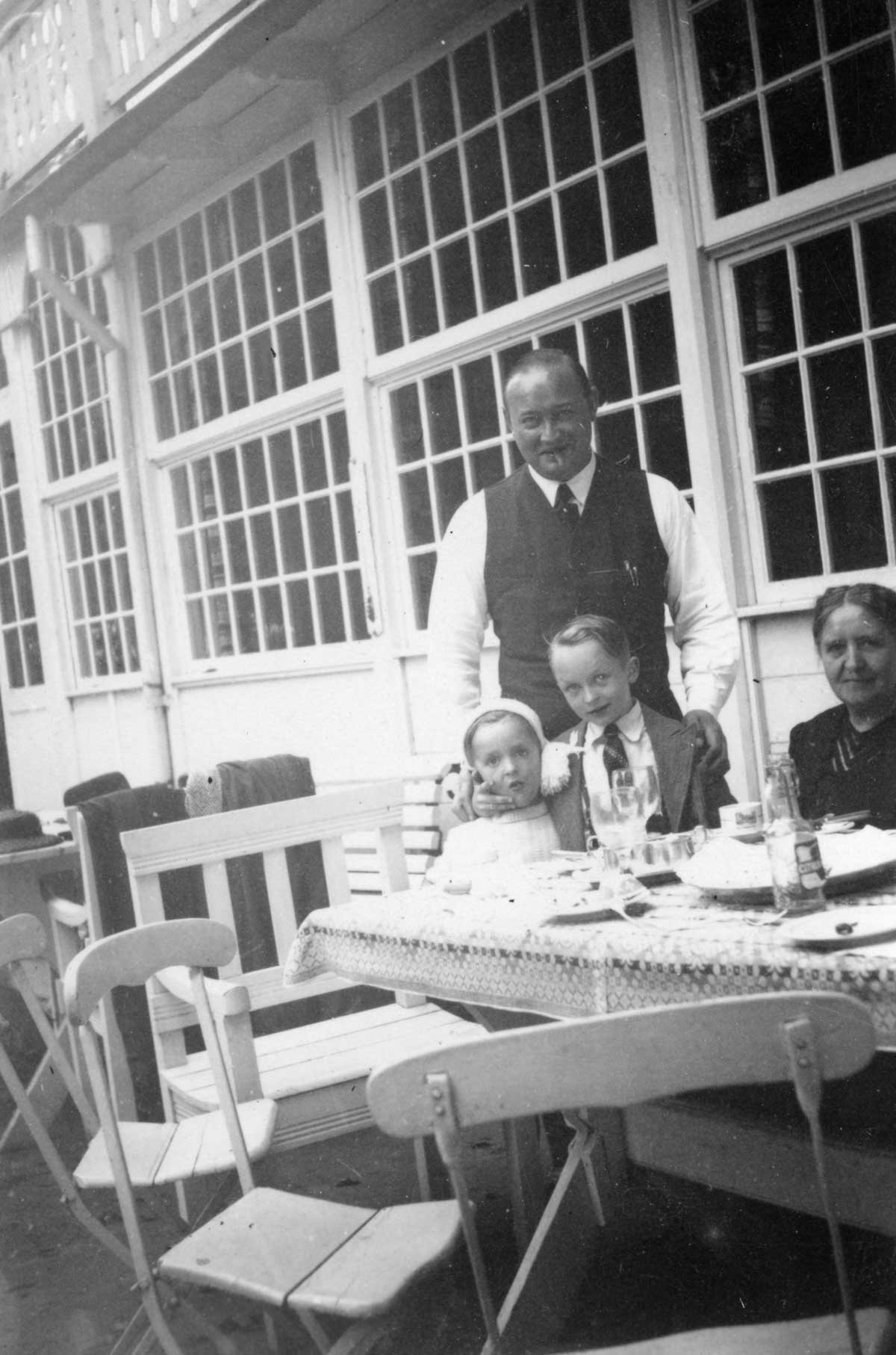
Photos: Silkeborg Archive
1953 – 1977
A FATEFUL TIME FOR THE HOTEL
In the years after the war, ambitious plans were once again laid for the historic hotel. Like his predecessors, the then owner, Holger Jensen, wanted to create something very special. That’s why he applied for a loan through the Marshall Plan in 1953, an American initiative that set out to provide financial aid for rebuilding European countries after the war. Holger Jensen’s plan was ambitious and comprehensive. The old buildings were to be demolished and replaced by a modern hotel. However, the project never got any further than the drawing board stage, which is why we’re able to enjoy the beautiful old buildings today and their unique history.
In 1956, the hotel was yet again subject to a foreclose auction. This time, the hotel is sold to Karoline Klovborg, a woman who has worked as a cook at Ny Hattenæs for 21 years. With her daughter and son-in-law, she manages to make the hotel a popular party and excursion destination again. It’s especially the Saturday balls and the big Pentecost party that attract the many guests.
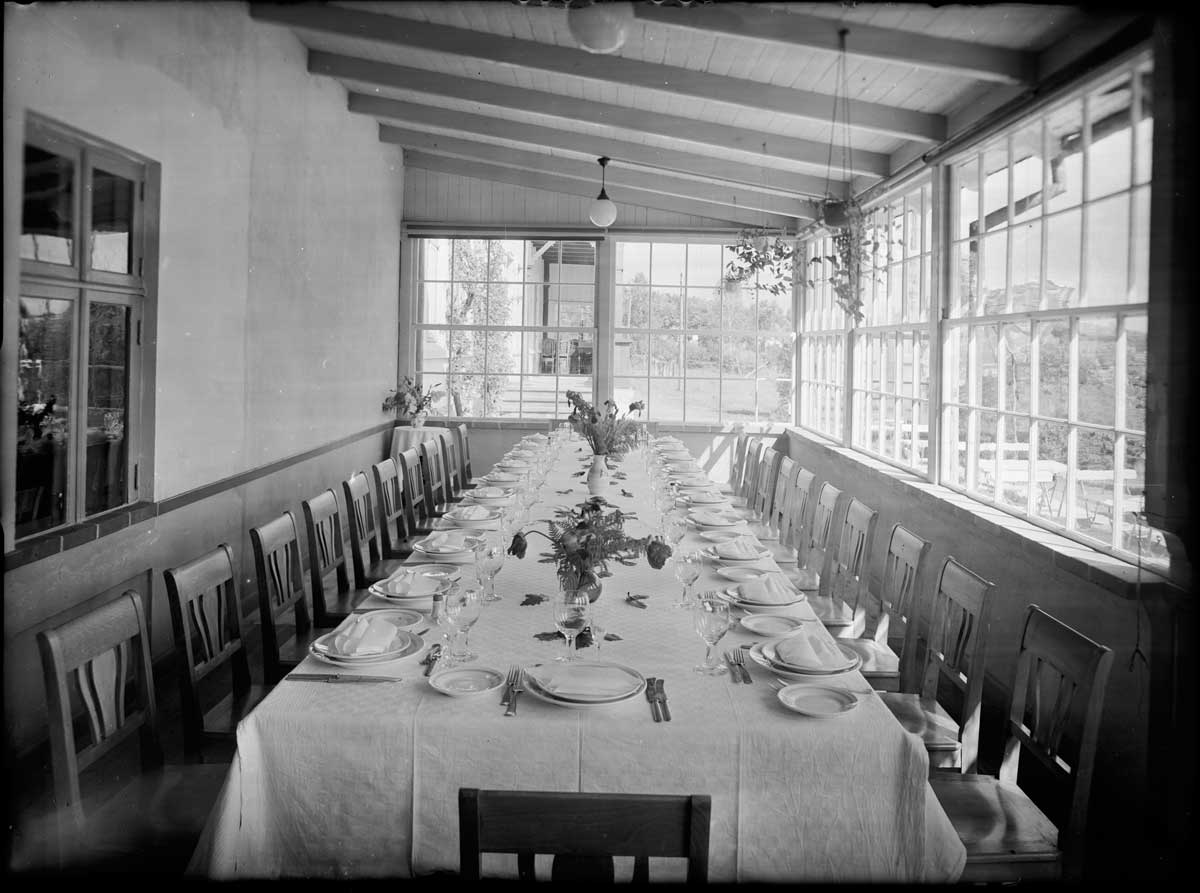
Photos: Silkeborg Archive
1953 – 1977
A FATEFUL TIME FOR THE HOTEL

Photos: Silkeborg Archive

Photos: Silkeborg Archive
In the years after the war, ambitious plans are once again laid for the historic hotel. Like his predecessors, the then owner, Holger Jensen, wanted to create something very special. That’s why he applied for a loan through the Marshall Plan in 1953, an American initiative that set out to provide financial aid for rebuilding European countries after the war. Holger Jensen’s plan was ambitious and comprehensive. The old buildings were to be demolished and replaced by a modern hotel. However, the project never got any further than the drawing board stage, which is why we’re able to enjoy the beautiful old buildings today and their unique history.
In 1956, the hotel is yet again subject to a foreclose auction. This time, the hotel is sold to Karoline Klovborg, a woman who has worked as a cook at Ny Hattenæs for 21 years. With her daughter and son-in-law, she manages to make the hotel a popular party and excursion destination again. It’s especially the Saturday balls and the big Pentecost party that attract the many guests.
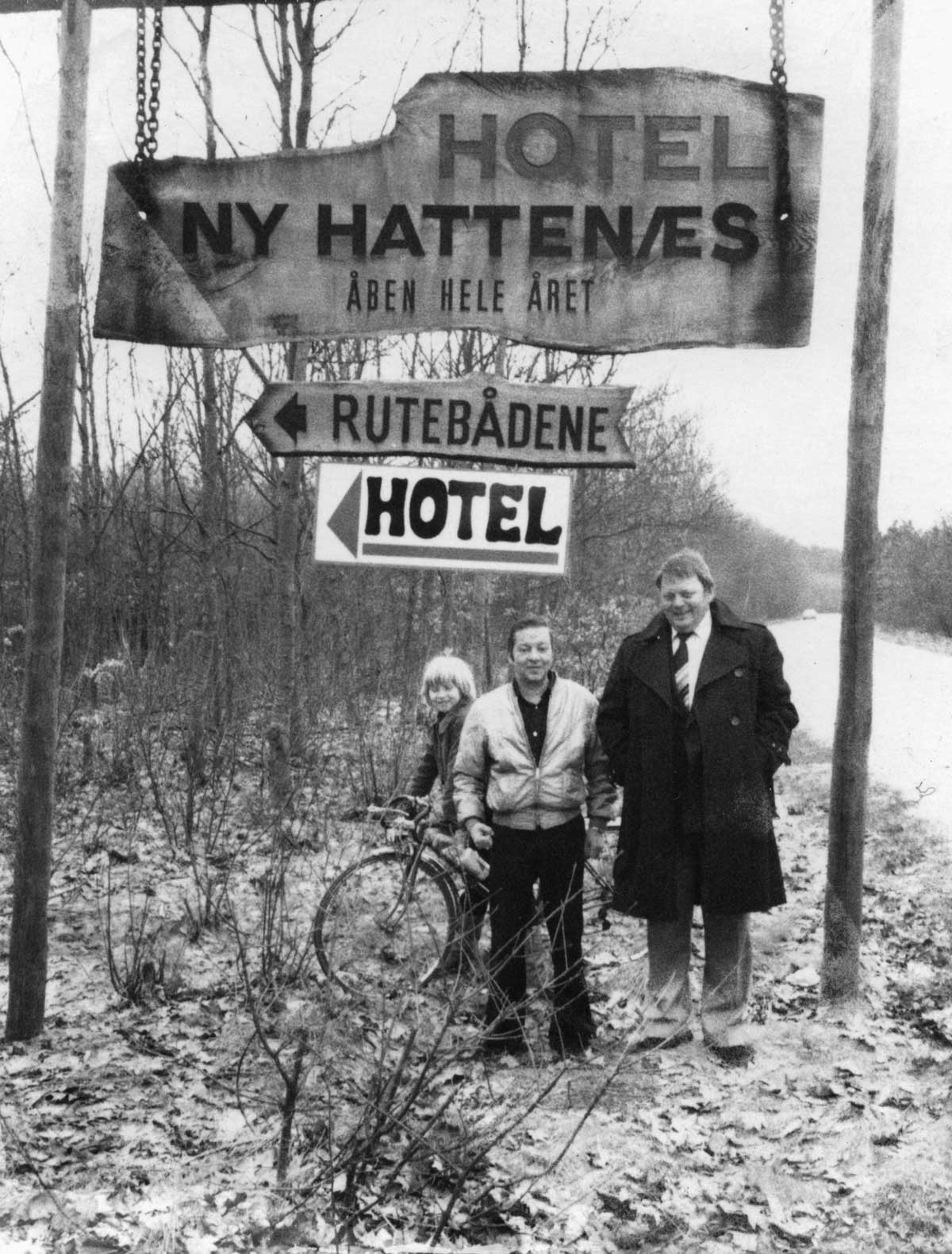
Fotos: Silkeborg arkiv
1978 – 2020
THE HOTEL BECOMES A GATHERING PLACE AGAIN
The nature surrounding Ny Hattenæs is very special and many people have enjoyed the area over the years. In 1978, Silkeborg Municipality bought Ny Hattenæs and the associated land surrounding the hotel. The purpose is to secure the recreational areas for the enjoyment of the municipality’s residents and tourists.
In 2009, Silkeborg Municipality decided to separate the main property and a larger plot of land. The municipality keeps ownership of the largest area to ensure that there continues to be free access to the beautiful, recreational area towards the lake and the peaceful forests surrounding the hotel. After a complete renovation, the new owners move in, and Ny Hattenæs is now run as a conference centre.
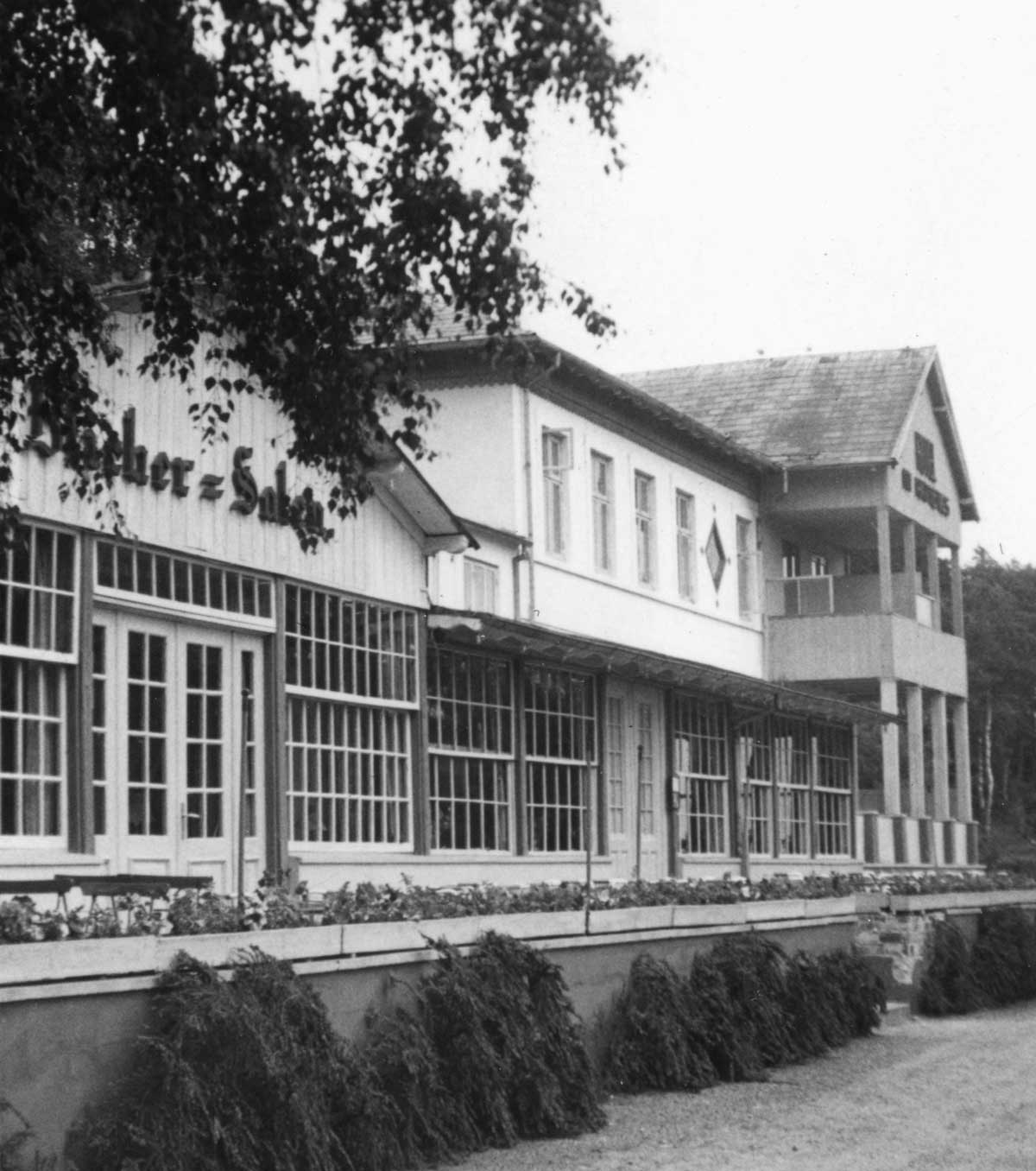
Photos: Silkeborg Archive
1978 – 2020
THE HOTEL BECOMES A GATHERING PLACE AGAIN

Photos: Silkeborg Archive
The nature surrounding Ny Hattenæs is very special and many people have enjoyed the area over the years. In 1978, Silkeborg Municipality buys Ny Hattenæs and the associated land surrounding the hotel. The purpose is to secure the recreational areas for the enjoyment of the municipality’s residents and tourists.

Photos: Silkeborg Archive
In 2009, Silkeborg Municipality decides to separate the main property and a larger plot of land. The municipality keeps ownership of the largest area to ensure that there continues to be free access to the beautiful, recreational area towards the lake and the peaceful forests surrounding the hotel. After a complete renovation, the new owners move in, and Ny Hattenæs is now run as a conference centre.
2020 –
THE HOTEL BECOMES A HOTEL AND RESTAURANT ONCE AGAIN
As of 2020, Ny Hattenæs Hotel has new owners. The sibling trio, Gitte Juhl Capel, Rikke Juhl Jensen and Klaus Juhl Pedersen, who run the family-owned, multi-brand company, Society of Lifestyle, are the ones behind the purchase. Their vision is to make Ny Hattenæs Hotel an attractive place to stay and eat, a place where people can meet and make memories together.

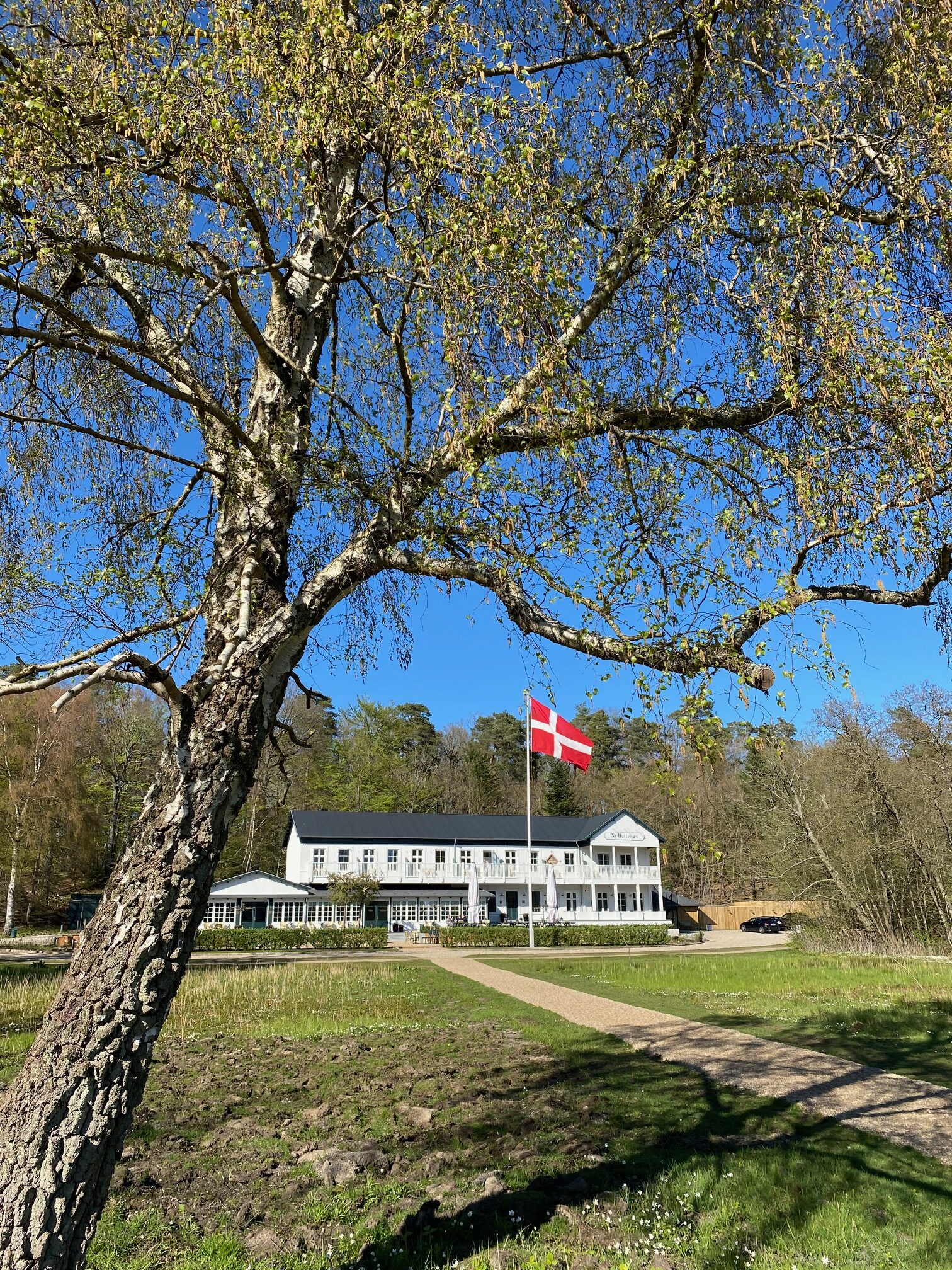
2020 –
THE HOTEL BECOMES A HOTEL AND RESTAURANT ONCE AGAIN
As of 2020, Ny Hattenæs Hotel has new owners. The sibling trio, Gitte Juhl Capel, Rikke Juhl Jensen and Klaus Juhl Pedersen, who run the family-owned, multi-brand company, Society of Lifestyle, are the ones behind the purchase. Their vision is to make Ny Hattenæs Hotel an attractive place to stay and eat, a place where people can meet and make memories together.
